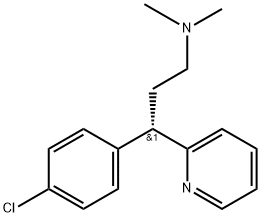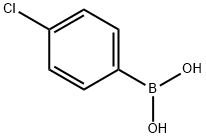Originator
Polaramine,Schering,US,1958
Uses
Activity of this drug is approximately twice that of chlorpheniramine.
Dexchlorpheniramine is also used for allergy symptoms, rhinitis, and dermatitis.
Manufacturing Process
Twenty grams of d-phenylsuccinic acid and 28 grams of 3-(2-pyridyl)-3-pchlorophenyl-N,N-dimethylpropylamine are dissolved in 400 ml of absolute
ethyl alcohol and allowed to stand at room temperature until crystallization is
effected. The crystals are filtered, washed with absolute ethyl alcohol and
recrystallized from 300 ml of this solvent in the same manner. The crystals
are recrystallized twice from 80% ethyl alcohol using 3.5 ml per gram of
compound in the manner described above and pure d-3-(2-pyridyl)-3-pchlorophenyl-N,Ndimethylpropylamine-d-phenylsuccinate is obtained, melting
point 145-147°C.
This salt is shaken with 100 ml of diethyl ether and 50 ml of 20% aqueous
potassium carbonate; the ether layer is separated, dried over anhydrous
potassium carbonate, filtered and the ether is removed in vacuo. The d-3-(2-
pyridyl)-3-p-chlorophenyl-N,N-dimethylpropylamine so obtained is a mobile
oil.
4.3 grams of the above base and 1.8 grams of maleic acid are dissolved in 20
ml isopropyl acetate and kept at room temperature until crystallization is
complete. The crystals are filtered, washed with ethyl acetate and
recrystallized from 15 ml of this solvent in the same manner. The crystalline
d-3-(2-pyridyl)-3-p-chlorophenyl-N,N-dimethylpropylamine maleate so formed
is then filtered off and dried. MP 113-115°C from US Patent 3,030,371.



